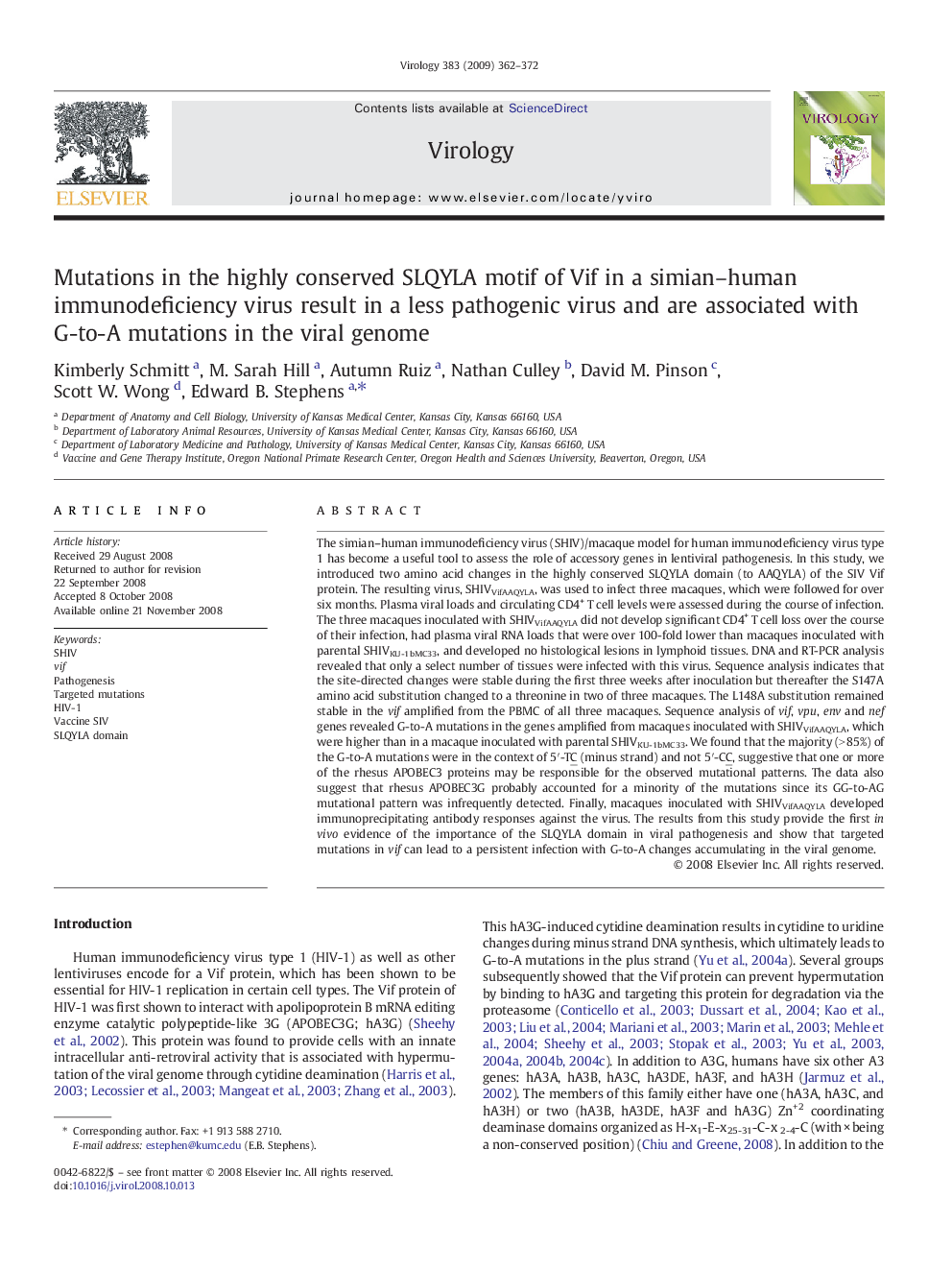| کد مقاله | کد نشریه | سال انتشار | مقاله انگلیسی | نسخه تمام متن |
|---|---|---|---|---|
| 3426711 | 1227341 | 2009 | 11 صفحه PDF | دانلود رایگان |

The simian–human immunodeficiency virus (SHIV)/macaque model for human immunodeficiency virus type 1 has become a useful tool to assess the role of accessory genes in lentiviral pathogenesis. In this study, we introduced two amino acid changes in the highly conserved SLQYLA domain (to AAQYLA) of the SIV Vif protein. The resulting virus, SHIVVifAAQYLA, was used to infect three macaques, which were followed for over six months. Plasma viral loads and circulating CD4+ T cell levels were assessed during the course of infection. The three macaques inoculated with SHIVVifAAQYLA did not develop significant CD4+ T cell loss over the course of their infection, had plasma viral RNA loads that were over 100-fold lower than macaques inoculated with parental SHIVKU-1bMC33, and developed no histological lesions in lymphoid tissues. DNA and RT-PCR analysis revealed that only a select number of tissues were infected with this virus. Sequence analysis indicates that the site-directed changes were stable during the first three weeks after inoculation but thereafter the S147A amino acid substitution changed to a threonine in two of three macaques. The L148A substitution remained stable in the vif amplified from the PBMC of all three macaques. Sequence analysis of vif, vpu, env and nef genes revealed G-to-A mutations in the genes amplified from macaques inoculated with SHIVVifAAQYLA, which were higher than in a macaque inoculated with parental SHIVKU-1bMC33. We found that the majority (> 85%) of the G-to-A mutations were in the context of 5′-TC (minus strand) and not 5′-CC, suggestive that one or more of the rhesus APOBEC3 proteins may be responsible for the observed mutational patterns. The data also suggest that rhesus APOBEC3G probably accounted for a minority of the mutations since its GG-to-AG mutational pattern was infrequently detected. Finally, macaques inoculated with SHIVVifAAQYLA developed immunoprecipitating antibody responses against the virus. The results from this study provide the first in vivo evidence of the importance of the SLQYLA domain in viral pathogenesis and show that targeted mutations in vif can lead to a persistent infection with G-to-A changes accumulating in the viral genome.
Journal: Virology - Volume 383, Issue 2, 20 January 2009, Pages 362–372